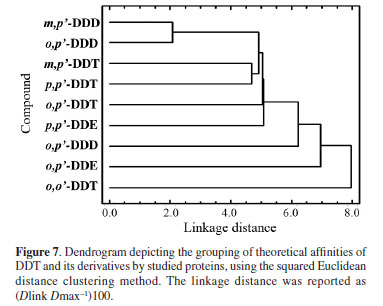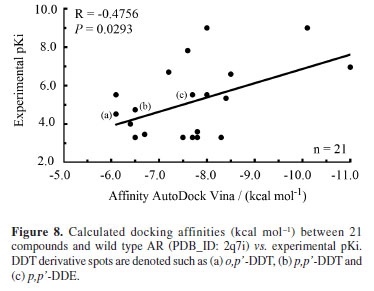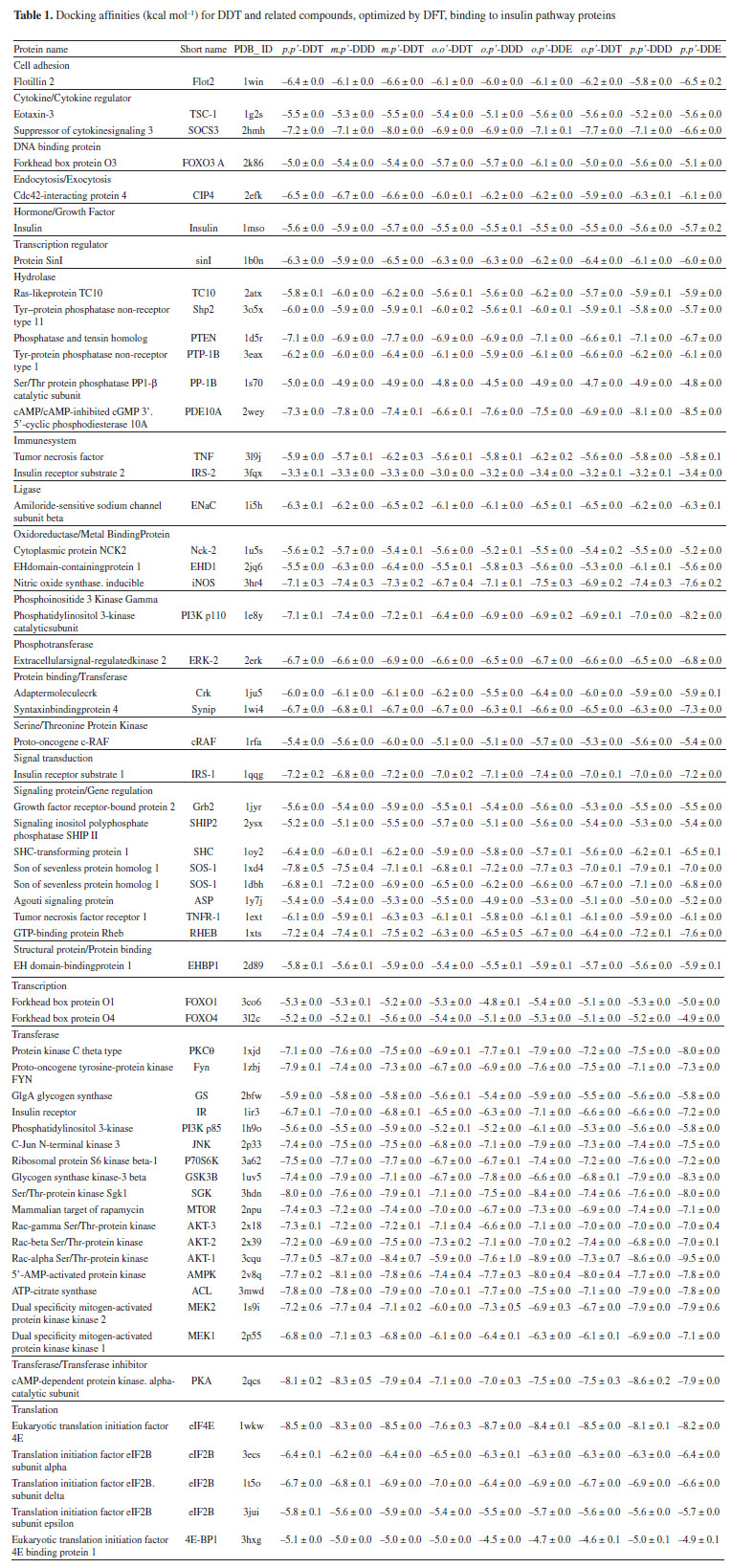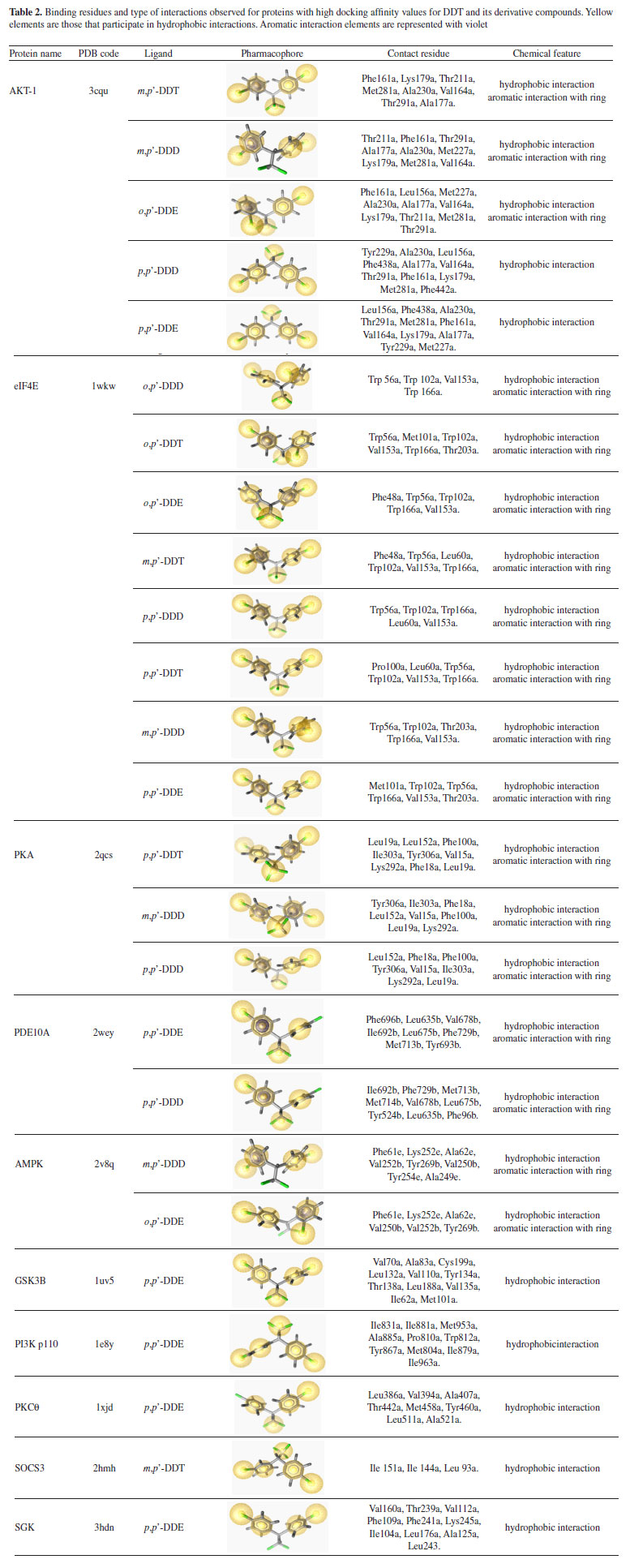DDT (1,1,1-trichloro-2,2-bis(4-chlorophenyl)ethane) has been linked to type 2 diabetes. Accordingly, a virtual screening was used to detect possible new targets for DDT and its derivatives in the insulin signaling. Compound structures were optimized by molecular mechanics and then by density functional theory (DFT), and protein structures were obtained from Protein Data Bank (PDB). Docking between 59 proteins involved in the insulin pathway according to data mining on PubMed, and DDT-related molecules as ligands, was performed with AutoDock Vina program. Residue-ligand interactions were checked with LigandScout 2.0 software. The greatest binding affinity score was found for the complex AKT-1 (PDB_ID:3cqu)/p,p'-DDE. Other proteins with good affinities for DDT derivatives were eIF4E (PDB_ID: 1wkw) and PKA (PDB_ID: 2qcs). These data show the theoretical plausibility that DDT and related chemicals could interfere with insulin receptor-related targets. Although biochemical mechanisms are still uncertain, diabetes prevalence in people exposed to DDT could be influenced by the binding of these compounds to proteins involved in the insulin pathway.
DDT; AutoDock Vina; AKT-1; insulin; docking














